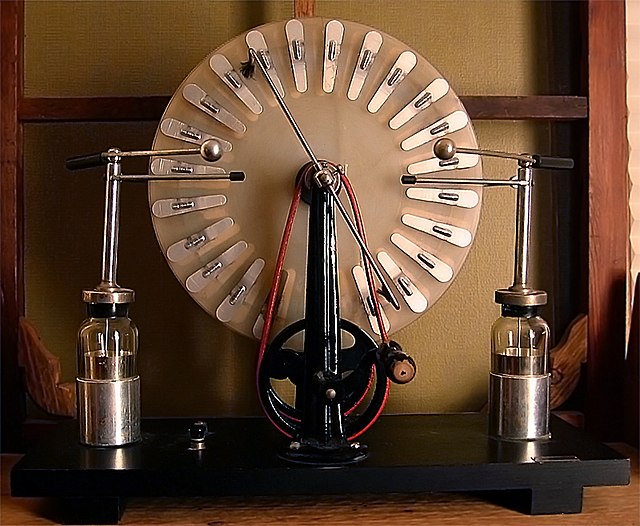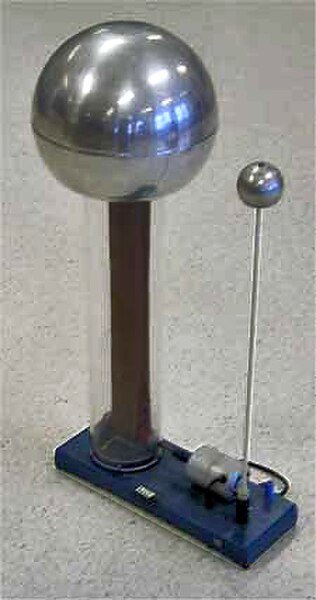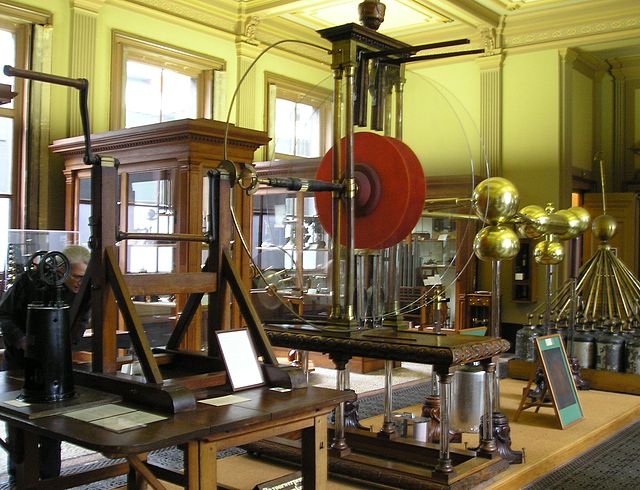The Wimshurst machine or Wimshurst influence machine is an electrostatic generator, a machine for generating high voltages developed between 1880 and 1883 by British inventor James Wimshurst (1832–1903).
Wimshurst machine with two Leyden jars
An engineering drawing of a Wimshurst machine, from Hawkins Electrical Guide
Quadruple sector-less Wimshurst machine
An electrostatic generator, or electrostatic machine, is an electrical generator that produces static electricity, or electricity at high voltage and low continuous current. The knowledge of static electricity dates back to the earliest civilizations, but for millennia it remained merely an interesting and mystifying phenomenon, without a theory to explain its behavior and often confused with magnetism. By the end of the 17th century, researchers had developed practical means of generating electricity by friction, but the development of electrostatic machines did not begin in earnest until the 18th century, when they became fundamental instruments in the studies about the new science of electricity.
A Van de Graaff generator, for class room demonstrations
12" Quadruple Sector-less Wimshurst Machine (Bonetti Machine)
Typical friction machine using a glass globe, common in the 18th century
Martinus van Marum's Electrostatic generator at Teylers Museum







